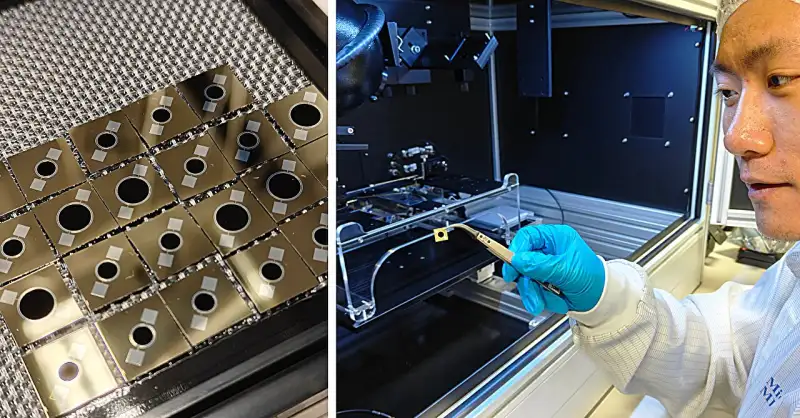Breakthrough in Infrared Photodiodes Offers Enhanced Efficiency for Critical Technologies

Infrared light detection is integral to a wide array of technologies, from household items like remote controls to complex systems used in telecommunications, self-driving cars, and virtual reality headsets. As these applications continue to evolve, improving the efficiency of infrared sensors, particularly photodiodes, could yield significant advancements in performance and cost-effectiveness. A recent development from researchers at Aalto University promises to enhance infrared detection by creating a photodiode that is 35% more responsive at the critical 1.55 µm wavelength, a vital component for telecommunications.
Key Innovation:
The breakthrough by Aalto University researchers lies in the development of a germanium-based infrared photodiode. Historically, germanium has been considered an underperforming material for infrared sensors, often lagging behind indium gallium arsenide, which is more efficient but also more expensive. By leveraging germanium—already a staple in semiconductor manufacturing—the researchers have made significant strides in infrared sensitivity while maintaining cost-efficiency.
This improvement was achieved through a combination of novel strategies. The team minimized optical and electrical losses, utilizing surface nanostructures to reduce optical losses and developing new methods to reduce electrical losses. As a result, their photodiode captures almost all of the infrared light that hits it, delivering unprecedented efficiency. This technology outperformed not only existing germanium-based photodiodes but also commercial indium gallium arsenide components.
Practicality and Scalability:
One of the most significant aspects of this new technology is its compatibility with existing production techniques. The team’s success in using standard semiconductor manufacturing processes for their photodiodes means that this technology can be scaled and integrated into current production lines with minimal disruption. Given the widespread reliance on infrared sensing in industries such as telecommunications, automotive, and consumer electronics, the ease of adoption positions this innovation as highly practical.
Implications for Industry and Applications:
The development of this new infrared photodiode is timely, as many industries increasingly depend on accurate infrared sensing. The efficiency gains provided by this technology could lead to improvements in systems like optical communications, autonomous vehicles, and even emerging fields such as augmented and virtual reality. As infrared detection becomes a foundational technology in these sectors, the introduction of more efficient sensors could significantly enhance overall system performance, reduce costs, and open doors for new applications.
Conclusion:
The breakthrough in infrared photodiodes by Aalto University represents a major step forward in sensor technology. By enhancing the performance of germanium-based photodiodes, the researchers have created a cost-effective and highly efficient component that can be readily integrated into existing manufacturing workflows. As infrared sensing plays an increasingly vital role in a diverse range of industries, this innovation stands to improve existing technologies and enable the development of new applications, potentially reshaping how we interact with and leverage infrared light in everyday life.


